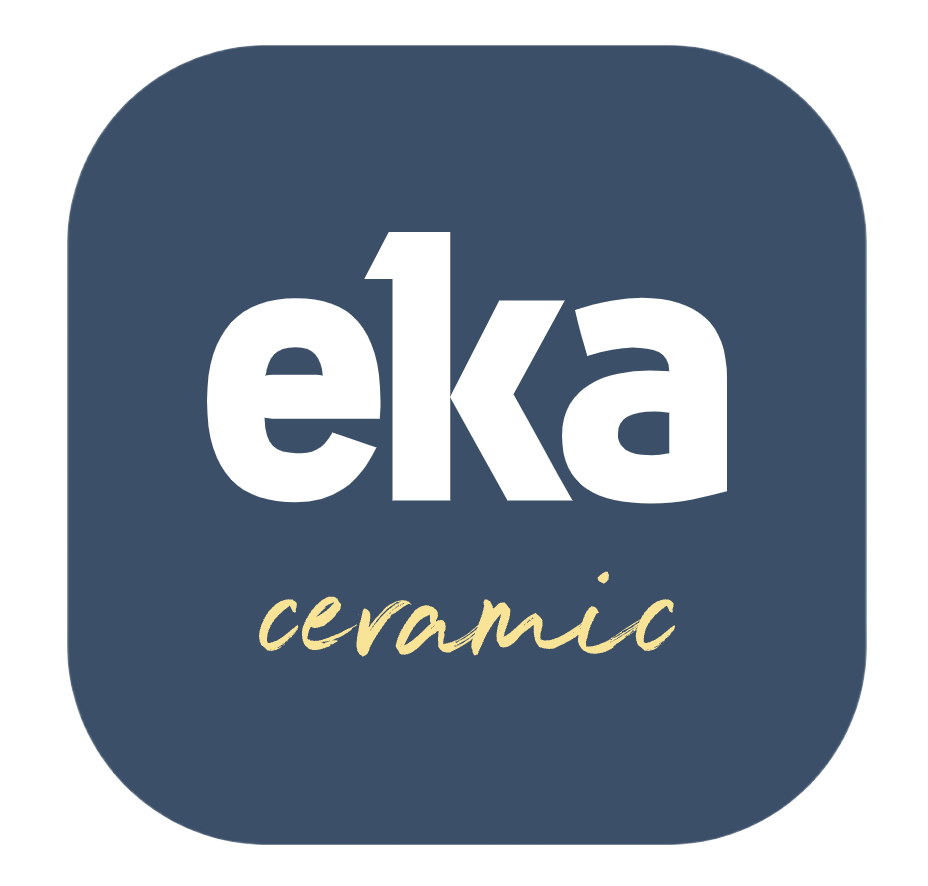Soup bowls are essential to any tableware set, and their size plays a crucial role in enhancing both the dining experience and the aesthetics of the meal. While there is no single “standard” size for all soup bowls, there are various commonly accepted sizes across different cultures, cuisines, and usage scenarios. This blog will provide a detailed overview of the standard soup bowl sizes, including their functions, materials, and how to choose the right size for your needs. We’ll also examine soup bowl trends in different countries and how EKA Ceramic’s range of products aligns with global standards.
Table of Contents
- What is a Soup Bowl?
- Factors Affecting Soup Bowl Size
- Usage Scenarios (Formal vs. Casual Dining)
- Cuisine Types
- Material and Design
- Standard Soup Bowl Sizes
- Bowl Capacity (Fluid Ounces)
- Bowl Diameter
- Bowl Depth
- Regional Variations in Soup Bowl Sizes
- Europe
- Asia
- North America
- Materials Commonly Used in Soup Bowls
- Ceramic Soup Bowls
- Porcelain Soup Bowls
- Glass and Stainless Steel Bowls
- How to Choose the Perfect Soup Bowl Size
- EKA Ceramic Soup Bowl Collection
- Conclusion
1. What is a Soup Bowl?
A soup bowl is a bowl specifically designed to serve soups, stews, and other liquid-based dishes. Unlike regular plates or shallow bowls, soup bowls often have a deeper, more rounded shape to contain hot liquids without spilling. They also vary in size, with some intended for a full meal and others for smaller servings or appetizers.
2. Factors Affecting Soup Bowl Size
There are multiple factors that influence the size of a soup bowl. Understanding these will help you choose the right bowl for different occasions.
Usage Scenarios: Formal vs. Casual Dining
- Formal Dining: For upscale dinners or events, smaller, more elegant soup bowls are typically used, often with a matching set of dinnerware. Bowls for formal settings may hold around 10–12 ounces, providing a moderate portion as part of a multi-course meal.
- Casual Dining: In more casual dining situations or family dinners, soup bowls are generally larger, offering enough capacity for a complete meal. Bowls may hold up to 20–24 ounces in this setting.
Cuisine Types
Different types of cuisines influence the size of soup bowls:
- Western Soups (Cream Soups, Chowders): Western-style soups tend to be thick, rich, and served in medium to large bowls (12–16 oz).
- Asian Soups (Ramen, Pho): Asian soups, particularly noodle-based soups, are often served in larger bowls, typically between 24 to 32 ounces, due to the combination of liquid, noodles, and toppings.
Material and Design
The material used for the soup bowl also impacts its size and usability:
- Ceramic Bowls: Ceramic soup bowls, such as those offered by EKA Ceramic, retain heat well and are often designed for both formal and casual settings. Their durability allows for versatile use, and they come in various sizes depending on the meal type.
- Porcelain Bowls: Porcelain bowls are typically lighter and more refined, making them ideal for formal dining settings.
3. Standard Soup Bowl Sizes
There are generally accepted size standards for soup bowls across the dining industry, though these can vary depending on the country or cultural preferences.
Bowl Capacity (Fluid Ounces)
- Small Soup Bowls (8–10 oz): These are ideal for appetizers, clear broths, or side soups.
- Medium Soup Bowls (12–16 oz): Perfect for serving a single portion of thicker soups like chowder, cream soup, or bisque.
- Large Soup Bowls (18–24 oz): These are typically used for hearty meals, such as stews, ramen, or pho.
Bowl Diameter
- Small Bowls: The diameter for small soup bowls ranges between 5 to 7 inches.
- Medium Bowls: Medium-sized bowls have diameters between 7 to 9 inches.
- Large Bowls: Large bowls generally have diameters exceeding 9 inches and can go up to 12 inches for specialty bowls like ramen.
Bowl Depth
- Shallow Bowls (2–3 inches): Shallow bowls are often used in formal dining and are easier to manage in multi-course meals.
- Deep Bowls (3–5 inches): These are best for casual, everyday use, as they accommodate a generous serving of soup or stew.
4. Regional Variations in Soup Bowl Sizes
Europe
European soup bowls tend to be smaller, particularly in France and Italy, where soups are commonly served as appetizers. The standard size for these bowls is between 8 to 12 ounces.
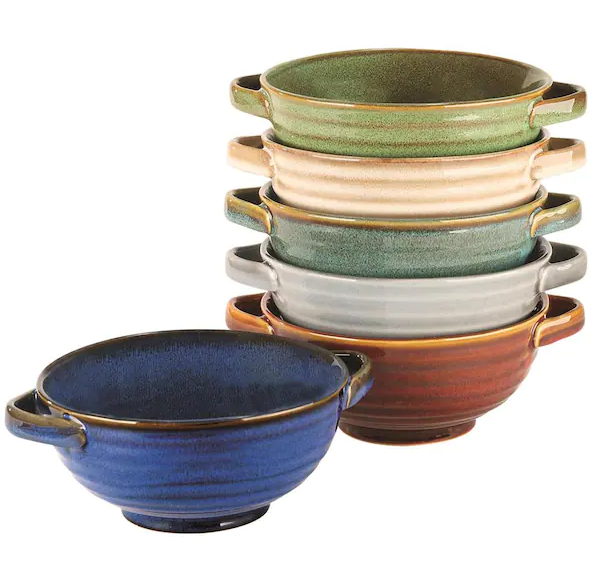
Asia
In Asian countries like Japan, China, and Vietnam, larger soup bowls are used to accommodate noodle soups like ramen and pho. Bowls typically range from 24 to 32 ounces, allowing for the addition of noodles, vegetables, and meat along with the broth.
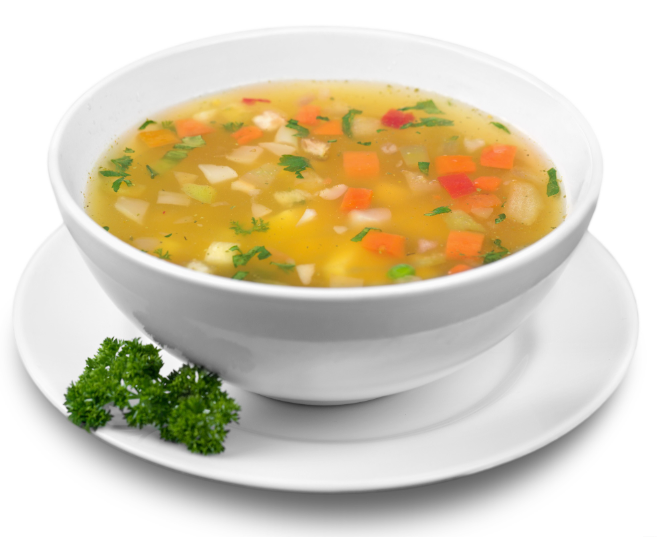
North America
In the United States and Canada, soup bowls vary widely depending on the type of meal. Casual dining often features larger bowls (16 to 20 oz) for full meals, while formal dining may stick to smaller sizes (8 to 12 oz).
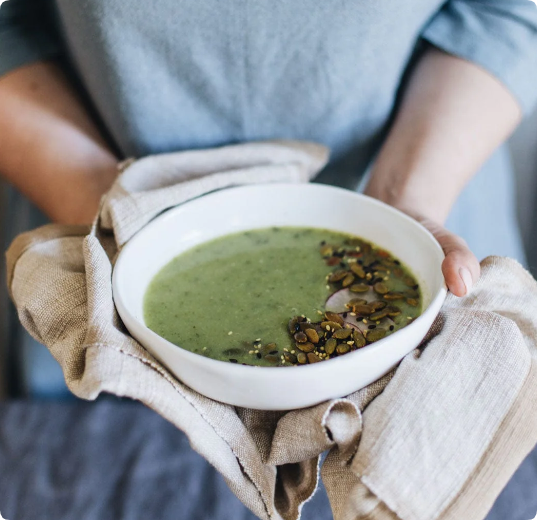
5. Materials Commonly Used in Soup Bowls
Which Materials Is Best?
Ceramic Soup Bowls
Ceramic is one of the most popular materials for soup bowls due to its heat retention and durability. EKA Ceramic specializes in ceramic tableware that combines traditional craftsmanship with modern design, making it an excellent choice for both casual and formal settings.
Porcelain Soup Bowls
Porcelain bowls are lighter and more elegant but may not retain heat as long as ceramic bowls. However, they offer a more refined look, often seen in upscale restaurants or formal dining sets.
Glass and Stainless Steel Bowls
While less common, glass and stainless steel soup bowls are used in contemporary kitchens for their sleek appearance. However, they are less effective at retaining heat compared to ceramic and porcelain.
6. How to Choose the Perfect Soup Bowl Size
Choosing the right soup bowl size depends on various factors, including:
- Type of Soup: Lighter soups or broths may require smaller bowls, while heartier stews and noodle soups demand larger capacities.
- Meal Size: For a full meal, a bowl capacity of 18–24 ounces is ideal, while for side dishes or appetizers, 8–10 ounces is sufficient.
- Dining Occasion: Formal dining typically calls for smaller, more refined bowls, while casual family meals are more flexible in size.
7. EKA Ceramic Soup Bowl Collection
EKA Ceramic offers a wide range of soup bowls that cater to various dining styles and preferences. Whether you’re looking for a small, elegant bowl for formal occasions or a larger, more casual bowl for family dinners, EKA’s collection is designed with both practicality and aesthetics in mind.
- Classic White Ceramic Soup Bowls: Ideal for formal dining, these bowls offer a timeless design that suits any table setting.
- Colorful Glazed Bowls: Perfect for casual meals or vibrant table settings, these bowls come in multiple sizes and are both microwave and dishwasher-safe.
- Large Ramen and Pho Bowls: Designed specifically for noodle soups, these larger bowls combine depth with a wide rim for easy handling.
8. Best Soup Bowls in 2024
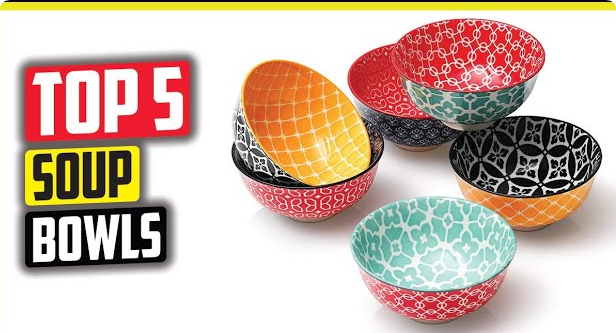
9. Conclusion
The standard size of a soup bowl depends heavily on the meal type, occasion, and cultural preferences. For general use, a medium-sized bowl with a capacity of 12–16 ounces is ideal, offering a balance between practicality and portion control. However, for larger meals like ramen or pho, a bowl capacity of 24–32 ounces may be more suitable. EKA Ceramic provides a wide range of soup bowls, designed to meet the varying needs of diners around the world, ensuring both functionality and style.
Whether you’re in need of elegant porcelain bowls for formal dining or durable ceramic bowls for everyday use, EKA Ceramic has the perfect option to elevate your dining experience. Explore their collection and find the ideal soup bowl to suit your needs.
